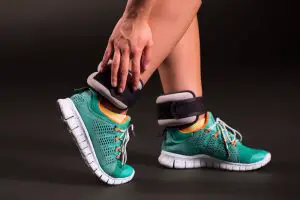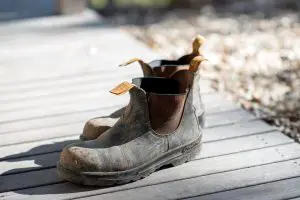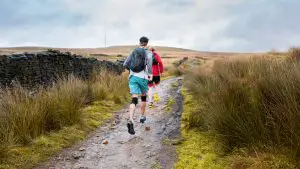Hiking With A Sprained Ankle: Prevention & How-To Guide
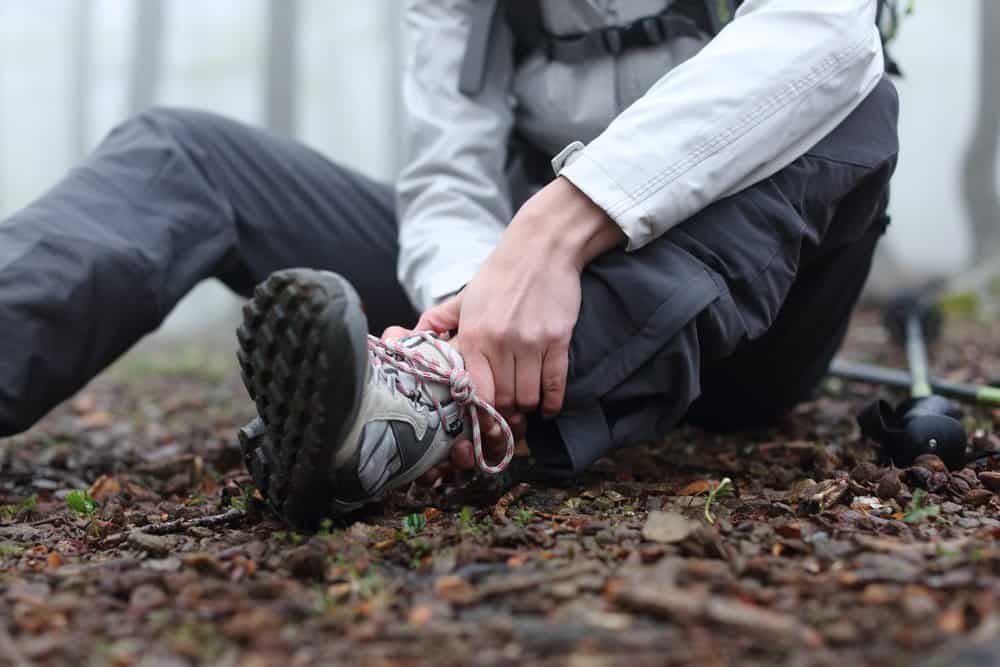
There’s nothing quite like the feeling of accomplishment when you reach the top of a mountain or summit after hours of effort. However, what do you do if you end up spraining your ankle halfway through? Can you even go hiking with a sprained ankle? I’ll share some tips on how to hike with a sprained ankle and the best ways to prevent ankle injuries and sprains while hiking.
Quick Links
Will My Sprained Ankle Get Worse if I Walk on It?
The short answer to this question is yes, your sprained ankle can worsen if you walk on it. However, if you have a very mild ankle sprain, then walking on it may not cause any further damage. If you have a more severe sprain, walking on it could cause further damage and prolong the healing process.
If you’re anything like me, you’re probably itching to get back out onto the trails and be back out in nature again.
A few years ago, I tore my Achilles (a non hiking-related injury) and was dying to get back out. I made every excuse just to get some fresh air. A few years before that, I injured my back and legs in a bicycle accident and developed painful sciatica.
And every time I hurt myself, I wanted to jump right back into action. I hated being stuck indoors!
But sometimes, I rushed it (and overdid it). And the pain lasted much longer than it should have. Essentially, patience is a virtue, especially when it comes to ankle injuries and hiking.
Before walking or hiking again, the first thing to know is what type of ankle sprain you have – basically, the severity or grade of your ankle sprain.
Different Types of Ankle Sprains
There are three grades of ankle sprains:
Grade 1: Mild Strain – This is the most common type of ankle sprain. Most often, this is a stretching or tearing of the ligaments on the outside of your ankle. You may have some slight swelling, bruising, and discomfort.
Grade 2: Moderate Strain – This type of ankle sprain is a more severe tear of the ligaments. You’ll likely have swelling, bruising and discomfort, and some loss of function.
Grade 3: Severe Strain – This is the most severe type of ankle sprain. There is a complete tear of one or more ligaments, and you’ll likely have a lot of swelling, bruising, and pain. You’ll also have difficulty walking.
If you’re not sure which type of sprain you have, here’s an easy way to tell:
If you can still walk on it, then it’s most likely a grade 1 sprain. If you can’t bear weight on your ankle at all, then it’s most likely a grade 3 sprain (or potentially a broken ankle.) A grade 2 sprain is somewhere in between.
So here’s the good news. You can walk on a sprained ankle, but you need to know your limits. And we’ll cover that next.
How Long Should I Wait Before Hiking on A Sprained Ankle?
Ideally, you should take it easy for at least 24 to 72 hours after your initial injury. That means absolutely no hiking for the next 2 or 3 days. First, opt for a compression bandage, like an ACE bandage, to reduce swelling. Then follow the RICE protocol to get the healing process started. RICE stands for Rest, Ice, Compression, and Elevation.
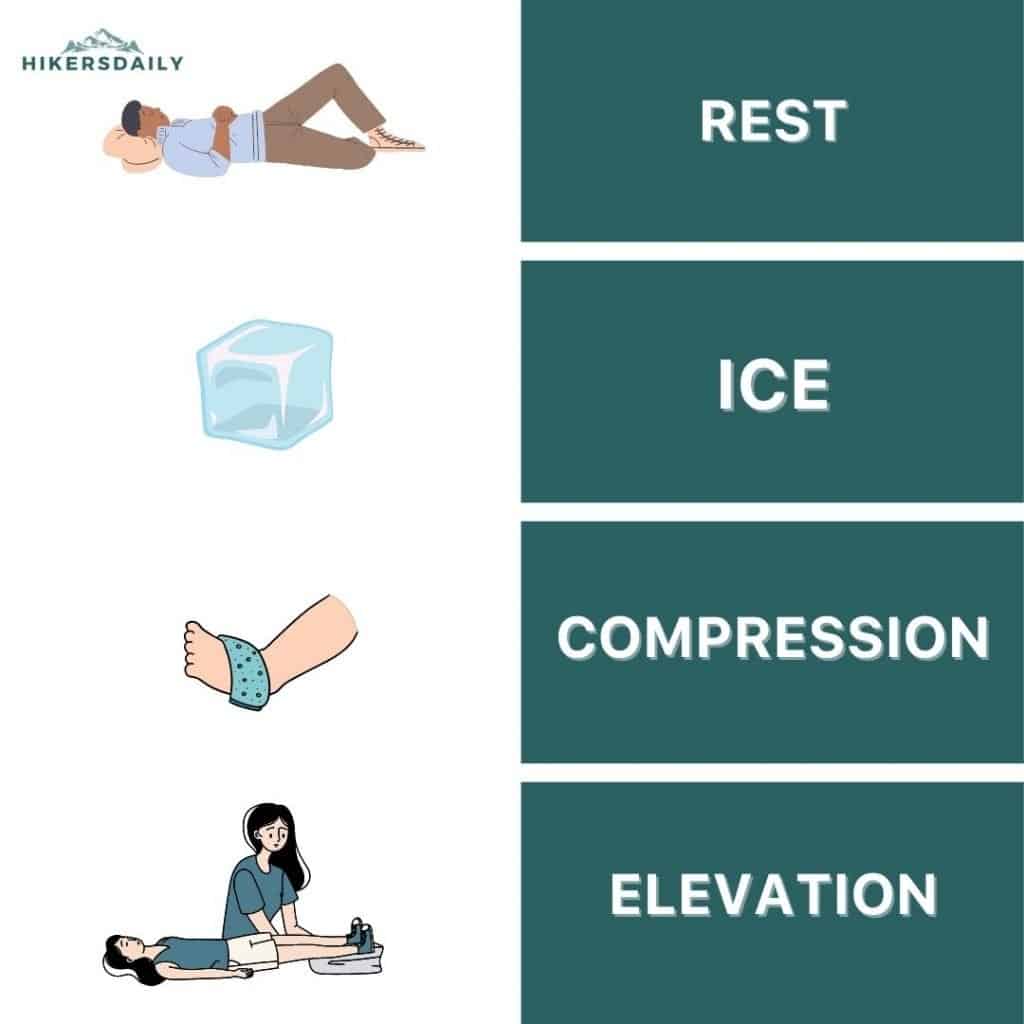
Then slowly start to increase activity as tolerated. If your pain increases with activity, then you’re going too fast. Back off, and try the next day again.
If you want to go hiking soon after a sprain, start by slowly walking on flat surfaces. Gradually increase the incline and distance as tolerated. If you experience any pain, stop and take a break.
You also need to be very careful with the type of terrain you’re hiking on. Avoid uneven surfaces and rocky terrain. Even misstepping on a small rock can be enough to reaggravate your injury and set you back days, if not weeks.
So if you’re feeling impatient and want to get back out on the trails as soon as possible, start by slowly and gently walking on a flat surface. Gradually increase the distance and incline as tolerated. If you experience any pain, stop and take a break.
What if You Have a Severe Ankle Sprain?
On the flip side, if you find yourself having severe pains in your foot and ankle and find it difficult to walk, you should listen to your body and stay off your feet and the trails for a while. If the severe pains persist or become unbearable, definitely consider seeking out medical attention to check for any ligament tears or broken bones.
Once you’ve recovered from the initial phases of a sprain, walking on your ankle again might make you feel a bit nervous. If it makes you feel more comfortable, you can always opt for a support brace and learn how to walk properly. Doing this can make all the difference in your recovery so you can get back on the trails and hiking again.
How to Hike with A Sprained Ankle
If you have a grade 1 sprain, then you can likely hike on it, but take it easy. Start by walking on flat surfaces and gradually increase the incline and distance as tolerated. If you experience any
It’s also important to wear supportive shoes when hiking. This will help to keep your ankle stable and reduce the chance of re-injuring it.
If you have a more severe sprain, then you’ll likely need to wait a bit longer before attempting to hike again. Depending on the severity, you may need crutches or even a walking boot.
Talk to your doctor before attempting to hike again, especially if you’re not sure what type of ankle sprain you have.
Be patient and allow yourself time to heal properly – it will be worth it in the end!
Ignoring your body’s need for rest with excessive movement and unnecessary hiking will only increase your risk of worsening the injury. However, if it’s not too painful to walk on your ankle immediately after an injury, that’s a good sign. It means that you at least don’t have any severe ligament or bone damage.
Now that we’ve covered hiking with a previous injury, how can we prevent sprains from happening in the first place?
How to Protect Your Ankle While Hiking
Like with many other things I’ve spoken about, prevention is usually the best medicine when it comes to hiking dangers and pitfalls.
Warm-Up Your Muscles
Well to start, you should always preface your hikes and other athletic activities with a light warm-up and stretch. You can do some toe touches, some ankle rollouts, or even trekking on a jog for two to three minutes. This bit of exercise will warm up the muscles and lower your risk of sustaining injuries.
Condition and Strengthen Your Muscles
As you start to hike more, you should gradually be making your hikes longer each time you’re out on the trail. This will prime your muscles to get used to having to engage at that level of physicality. You can also do cross-training to assist in building stronger muscles.
Hiking can be simple, or it can be challenging depending on where your fitness level is and how far you’re willing to go. Regardless of your skill level, you should always make sure you’re in tip-top shape. This will contribute to the quality of your hikes and help create solid padding around your joints to prevent injury.
Use Trekking Poles
Trekking poles are great for balance, and they also take some of the pressure off your ankles and knees. If you’re using trekking poles, make sure you plant them firmly on the ground as you step – this will provide better stability and reduce your chances of slipping or losing balance.
Wear the Right Shoes
Finding the right shoe is a critical part of safe hiking. Without the right pair of hiking shoes, you are putting yourself at a greater risk of getting a sprained ankle. Always make sure that your shoes are providing you with comfortable support in the toes and the heels. Consider even opting for boots that can cover the ankle, as this can provide some further support in preventing ankle strains.
Replace Your Old Hiking Shoes
In addition to making sure you have the right kind of shoes, you also know when it’s time to swap out your favorite old hiking boots for some new ones. Hiking boots are durable, but can still wear down over time just like any other shoe. Old worn-down hiking boots don’t have the grip and the stability like a newer pair would.
Even though they’re comfortable and lived in, your old pair of boots could put you at a higher risk of getting a sprain. If and when you do get yourself a new pair of boots, be sure to wear them for a few days to break them in. This will ensure you the most amount of comfort before your big hike and reduce the probability of getting blisters, which can be equally annoying.
So what if you do everything right to prepare for your hike, and you still find yourself with a sprain from stepping on the wrong rock or tripping over a root?
What Happens if You Sprain Your Ankle While on A Trail?
You should first examine your surroundings. If there is a facility nearby, you can always find your way there. They can provide some basic first aid help and call an ambulance if needed.
If you find yourself deep in the boonies and out in the middle of nowhere, remember the RICE protocol. If the injury is just causing you only minor discomfort, you may want to continue. Use your best judgment here.
If the injury is a bit worse, there are a few things you can do. Adding a cold compress if you have one available, would be ideal. You can use ice, or soak a cloth in cold water either from the stream or from the tap. All these options should be fine. Finally, wrap the injured area with some kind of cloth, and elevate it.
If your sprain is causing you to limp or experience swelling, you should get medical help as soon as possible. If you find yourself in this situation, keep your ankle wrapped and stay off of it as much as possible. If you need to get around, you can rely on trekking poles for support, kind of like a crutch replacement. (Which is another reason why carrying trekking poles is so great.)
Conclusion
When properly prepared, hiking is a great activity that takes you to new and exciting places you never thought you’d experience. The quality of your hikes will always depend on how prepared you are physically and on how safely you do it.
Injuries, especially ankle injuries while hiking, can still crop up when you least expect them. But with the proper knowledge, you can heal faster, and prevent them from happening in the first place. Good luck on the trails!

